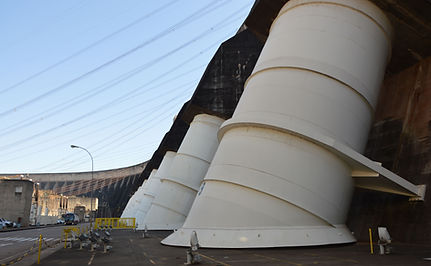
Water Technologies
All sectors deal with water
-
Many industries use water extensively, such as energy, agriculture, food, public utilities, textile, tanning, constructions, etc.
-
Other sectors produce components and systems for water management (pumps, filters, valves, pipes, fittings, control systems, etc).
-
Other sectors such as health and environment are influenced by the quality and quantity of water.
Innovating water technologies is more and more a necessity
All over the world, and particularly in the developing countries, there is a strong necessity of low-cost technologies capable to get energy consumption and environmental impact lower.
More generally, there is a necessity of systems capable to reduce the unitary cost of water and increase the useful life of plants and their reliability.
The market for Water Technologies is huge
Many fields of application such as purification, potabilization, irrigation, energy production, heating/cooling, water production, etc,
A very diverse demand:
-
rural and peri-urban areas demand low-cost solutions for water treatment and distribution,
-
industrialized countries and big cities demand advanced technologies for the optimization, storage, control, purification and reuse of water,
-
agriculture requires intelligent systems for the optimization of water use in irrigation activities;
Different technological processes such as desalination, disinfection, re-mineralization, removal of heavy metals and nitrates, de-gasification;
Integration of a wide variety of systems and components (pipes, filters, membranes, sensors, pumps, control and energy systems)
Different materials and technologies are used.
New technologies are available today
Key Enabling Technologies (KETs) such as micro and nanoelectronics, photonics, nanotechnology, biotechnology, new materials, and advanced manufacturing systems enable disruptive and significant improvements in the performance of water technologies.
While individual KETs have enormous potential for innovation, combinations of KETs offer even greater possibilities for technology development and the potential to create new markets.
Main fields of application of "new technologies" are:
-
artificial rain production
-
desalination of seawater
-
treatment of superficial water
-
wastewater purification
-
re-use of industrial and domestic greywater
-
drip irrigation
-
water-from-air-production
Sometimes, smart design, knowledge of physics, and use of local resources and materials allow water to be produced at very low cost (e.g., Warkawater Tower)


.jpg)


Health problems of Water Management
Despite the innovation efforts, many problems of water management affect many people in the world.
Some of these are:
-
Arsenic removal: Hundreds of millions of people, mainly in rural areas of developing countries, are exposed every day to high arsenic levels in drinking water. Arsenic is a human carcinogen, and its presence in drinking water increases cancer mortality risk and causes liver failure, as well as cardiovascular, neurological and several other diseases.
-
Algal bloom in desalination plants: Seawater desalination technology is capable of solving water scarcity in arid regions of developed and developing countries. An emerging threat to this technology is algal blooms, which can cause the shutdown of desalination plants due to operational problems caused by algal-derived substances known as transparent exopolymer particles (TEP).
-
Fluoride removal: Millions of people in Africa, Asia, Europe, America, and Australia are exposed every day to high fluoride levels in drinking water. Long-term exposure to elevated fluoride concentration in drinking water is responsible for dental and skeletal fluorosis, and increased incidence of cancer and other diseases.

